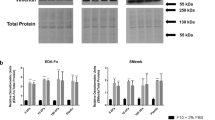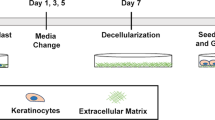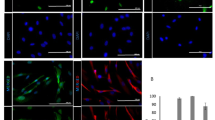Abstract
STUDIES of differentiating tissues indicate that the characteristic products of differentiated cells begin to appear only after cell multiplication has slowed or stopped1. Therefore, it was concluded that cell multiplication and differentiated function are mutually exclusive. Although this conclusion was based mainly on studies of progressively developing tissues, it has been extended to cells which have already differentiated but have retained the capacity to multiply2. This is supported by some older studies of differentiated cells in culture3–5. There is growing evidence, however, from studies both in vitro6,7 and in vivo8, that cell multiplication and differentiated function are compatible in differentiated cells capable of multiplication. Here we add to that evidence by showing that the production of hyaluronic acid, a characteristic product of connective tissue, is positively correlated with the multiplication rate of chick embryo fibroblasts.
This is a preview of subscription content, access via your institution
Access options
Subscribe to this journal
Receive 51 print issues and online access
$199.00 per year
only $3.90 per issue
Buy this article
- Purchase on Springer Link
- Instant access to full article PDF
Prices may be subject to local taxes which are calculated during checkout
Similar content being viewed by others

References
Holtzer, H., Weintraub, H., Mayne, R., Mochan, B., Curr. Topics dev. Biol., 7, 229–254 (1972).
Green, H., and Todaro, G. J., Ann. Rev. Microbiol., 21, 573–600 (1967).
Green, H., and Goldberg, B., Nature, 204, 347‐349 (1964).
Abbott, J., and Holtzer, H., J. Cell Biol., 28, 473‐487 (1966).
Ephrussi, B., and Temin, H. M., Virology, 11, 547–552 (1960).
Peterkofsky, B., Archs Biochem. Biophys., 152, 318–328 (1972).
Cahn, R. D., and Lasher, R., Proc. natn. Acad. Sci. U.S.A., 58, 1131–1138 (1967).
Majumdar, C., Tsukada, K., and Lieberman, I., J. biol. Chem., 242, 700–704 (1967).
Rubin, H., and Koide, T., J. Cell Biol., 56, 777–786 (1973).
Rubin, H., J. Cell Biol., 51, 686–702 (1971).
Rein, A., and Rubin, H., Expl Cell Res., 49, 666–678 (1968).
Rubin, H., and Fodge, D., in Control of proliferation in animal cells (edit. by Clarkson, B., and Baserga, R.), 1, 801–816 (Cold Spring Harbor Laboratory, New York, 1974).
Bollet, A. J., J. clin. Invest., 37, 858–863 (1958).
Bollet, A. J., Seraydarian, M. W., and Simpson, W. F., J. clin. Invest., 36, 1328–1332 (1957).
Morris, C. C., Ann. N.Y. Acad. Sci., 86, 878–915 (1960).
Dische, Z., J. biol. Chem., 167, 189–198 (1949).
Bitter, T., and Ewins, R., Biochem. J., 31, 43P (1961).
Author information
Authors and Affiliations
Rights and permissions
About this article
Cite this article
MOSCATELLI, D., RUBIN, H. Increased hyaluronic acid production on stimulation of DNA synthesis in chick embryo fibroblasts. Nature 254, 65–66 (1975). https://doi.org/10.1038/254065a0
Received:
Revised:
Issue Date:
DOI: https://doi.org/10.1038/254065a0
This article is cited by
-
Correlation of hyaluronic acid accumulation and the growth of preneoplastic mammary cells in collagen: A lonitudinal study
In Vitro Cellular & Developmental Biology - Animal (1992)
-
A low-serum medium for tendon cells: Effects of growth factors on tendon cell growth and collagen production
In Vitro Cellular & Developmental Biology (1985)
-
Fibronectin — Mediator between cells and connective tissue
Klinische Wochenschrift (1982)
-
Do viruses use calcium ions to shut off host cell functions?
Nature (1978)
Comments
By submitting a comment you agree to abide by our Terms and Community Guidelines. If you find something abusive or that does not comply with our terms or guidelines please flag it as inappropriate.


